Why Does the United States Military Continue to Use Fmj Bullets
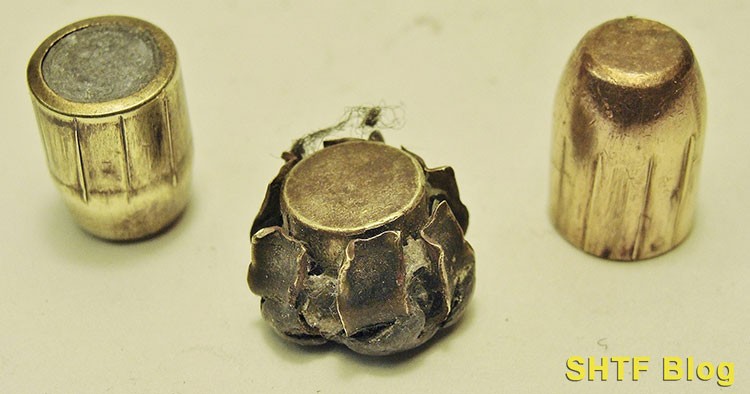
Jacketed hollow points vs full metal jackets (JHP vs FMJ), two bullets widely sold and used. Some people choose between them carefully, others don't think much about it. Which bullet type should you use?
Simple, right? One expands and one doesn't – at least, in theory…
It depends on the applications. Let's dig the differences…
Two Deer with Two Different Loads
Deer season was coming to a close and Jim was not a happy hunter. After three weeks of trying, my friend's sole opportunity to fill his freezer ended in nothing track soup. As the story went, a chunky six-pointer materialized on a wooded hillside at 40 yards, offering a perfect broadside shot. When the rifle barked, the deer turned and bolted uphill before disappearing over the ridge.
After the obligatory wait, Jim's careful tracking revealed sparse drops of blood that eventually led down the hill's far side to the edge of a dense swale swamp. All further sign was swallowed up by the wet morass but the outcome was revealed two days later by squawking crows and ravens. Turned out the deer (or what remained), although solidly hit, managed to cover several hundred yards before piling up near the opposite edge of the swamp.
I was curious as to what Jim was using for a rifle. The answer was "a .308." Okay, but what about the load? Jim appeared vexed; it was a .308 of course! And he was done with that caliber! The rifle, a circa 1970s Remington Model 700 bolt-action was returned to the family gun cabinet where it had languished since his father's passing.
With less than a week to spare, out came the well-used Winchester Model 94 .30/30 that Jim had toted since his teenage years. No longer jinxed, the day before the season ended he got a crack at a doe, which obliging tipped over at the end of a 40-yard dash. The conclusion? The .308 is bad. The .30/30 is good, proven once again.
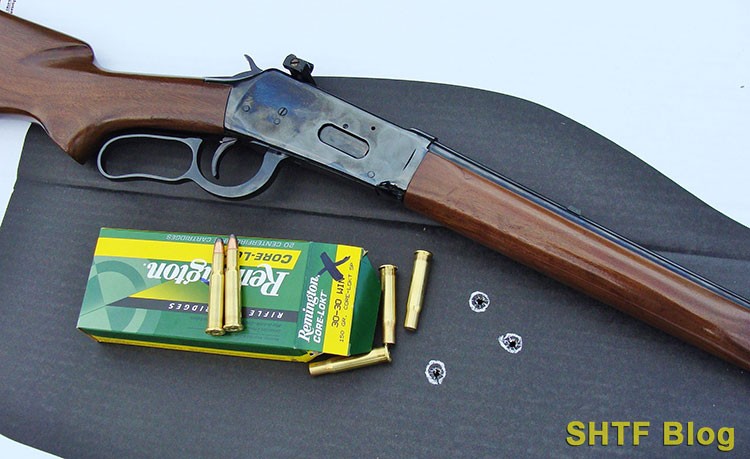
Sometime later, I had an opportunity to examine the contents of a coffee can containing Jim's .308 "hunting" load. The dozen or so cartridges were all commercially produced full metal jackets similar to military "ball" 7.62×51 NATO ammunition.
Attempts to explain their differences to expanding-type sporting bullets resulted in glazed eyes. Too bad Jim's deer was needlessly wasted, but at least by sticking with his .30/30, he'll wind up with a suitable bullet, even if it is by chance.
And the caliber should work well enough for our thick Maine woods. The more readily available loads are basic 150 or 170- grain jacketed soft-point types. Although of tougher construction than most "jacketed hollow-points," they're designed to readily "mushroom" while penetrating tissue. For more than a century, those less familiar with firearms have sometimes called them "dumdums," a generalized reference to expanding bullets grounded in an interesting history.
Bullet History – FMJs
The advent of efficient smokeless powders during the late 1800s led to a new generation of high-velocity rifle projectiles. Previously, projectiles were fueled by black powder. They were slower and had loopy trajectories, but most were large enough to strike like Thor's Hammer, even if they didn't expand. The new wave of smaller bullets could produce similar effects through higher velocities, which also increased their range – and bore friction.
To prevent "stripping" in the rifling and rapid accumulations of lead, the fast new projectiles were clad with a soft copper "jackets." Some iconic military calibers that followed include the 7.62 X 54 Russian, 8mm Mauser, .303 British, and the .30/06 Springfield (still a benchmark U.S. sporting cartridge).
It wasn't long before enterprising tinkerers began modifying pointed bullet tips to expose their lead cores in hopes of producing expansion. These resulting "soft-points" greatly enhanced terminal effects by producing larger wound channels – grievous enough that expanding bullets were soon banned for military use by signatories of the 1899 Hague Convention.
Interestingly, the United States was never a participant although, for the most part, its military small arms projectiles are still full metal jacket types – or FMJs. For all who abide, there is likely some pragmatic logic. Since FMJ bullets maximize penetration, additional casualties are possible and wounded troops require assistance, which tie up other assets.
Of course, law enforcement and civilian concerns are the opposite. If deadly force is required, the goal is rapid incapacitation with minimal risk to bystanders. The firearm of choice has long been some type of handgun. Most "pistols" of the late 1800s were revolvers, and even after the transition to smokeless metallic cartridges, velocities were slow enough to eliminate the need for jacketed bullets.
However, the dawn of the 20th century was accompanied by new semiautomatic designs, made possible by cleaner-burning smokeless propellants. But lead bullets can create stoppages during cycling. The trip from a magazine into a chamber goes better with a smooth and durable bullet. The expedient solution was one with a jacket, configured as a slippery round-nose (RN).
In short order a number of new pistol cartridges appeared featuring RN FMJs. You may have heard of a few (kidding here) like the 9mm Luger, .45 Automatic Colt Pistol (for the U.S. Model 1911), .32 ACP, .380 ACP – and a bunch of others.
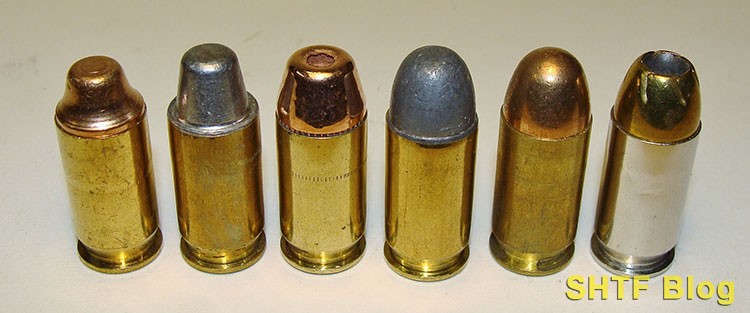
They all lack the high velocity and energy common to military rifle cartridges. When bullets don't expand – especially slower ones – bigger and heavier types are deemed the safer bet for decisive results. Hence, the fabled U.S. .45 ACP which quickly established a clear edge over European 9mm loads – and just about all others fired from pistols, or for that matter, most revolvers.
But some of it is myth. Stories persist about people "knocked down" by a hit from a 230-grain hardball (FMJ) .45 ACP round. Based on firsthand unpleasant experience, I wouldn't bet my life on that reaction. Others apparently agree. Studies have finally generated enough concrete data to quantify the effectiveness of defensive handgun projectiles.
JHP Conundrums
Even today, most conventional big game rifle cartridges employ some type of jacketed soft-point (JSP) bullet. Jacketed hollow-point (JHP) versions are usually lighter-weight offerings, intended for use on varmints where rapid expansion and limited penetration are advantageous. Many are fired at muzzle velocities approaching 3000 feet per second (fps), or more.
Conventional handgun projectiles travel only half as fast – many closer to 1000 fps. Some powerhouse cartridges like the .44 Magnum employ tough JSPs, but most others utilize a hollow-point to initiate expansion.
And herein lies a rub. Even some highly regarded pistols like the Model 1911 or Browning Hi-Power were designed for FMJs.
Until well into the latter half of the 20th century, the few expanding types relied upon cavernous hollow-points. If they could expand, most were less than ideal matches for that era's feed-ramps and chamber dimensions. Terminal effectiveness was often gauged anecdotally, a situation that improved after the widely studied FBI Massacre of 1986.
So-called "stopping power" remains a nebulous term, but the ensuing methodology for assessment of bullet performance is now closer to real-world outcomes.
FBI Protocol
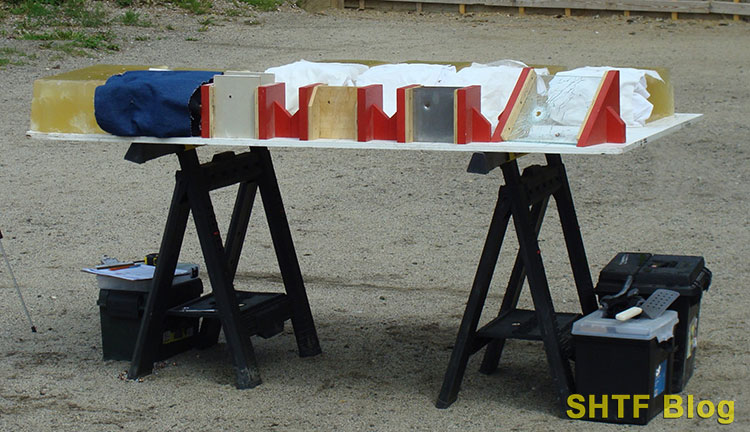
The FBI Protocols provide an analytical process to quantify bullet performance based on expansion, weight retention, and penetration. Those that meet the "pass" standards have been recovered from ballistic gelatin after penetrating various barriers such as clothing, glass, building materials, sheet metal.
The major ammo manufacturers all vie for lucrative governmental contracts by offering products designed to meet the standards. Agencies shop carefully for those that can live up to the established protocols, often via independent testing. The results have further value for civilian use, although some aspects may be less critical.
For example, the penetration standards could be excessive. Thus, manufacturers have developed loads tailored for civilian use. For those interested in the details, plenty of information is readily available online from various sources including the ammunition manufacturers.
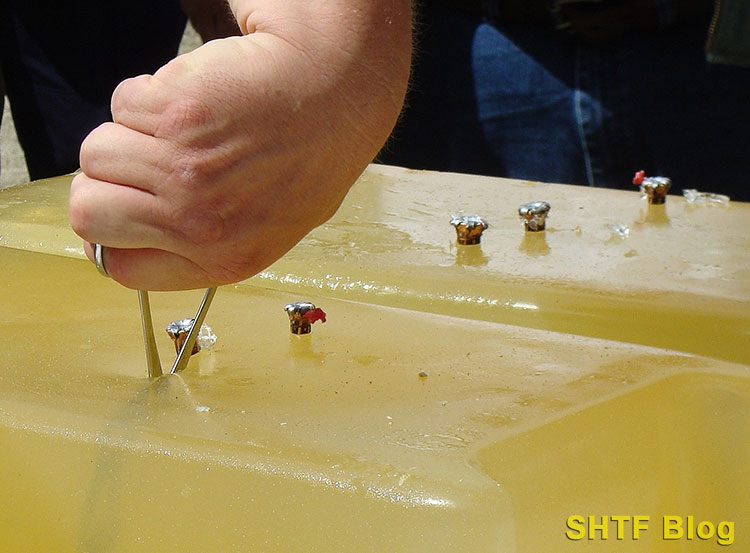
JHP Expansion Factors
Nowadays, we expect textbook expansion, but it's certainly not a given. The Devil is often in the details.
During a fairly recent ballistic test (using the above protocols) that I attended, the topic of .380 ACP performance popped up. Turned out a couple smaller pistols were on hand, along with several brands of "defensive" JHP ammo. They penetrated like champs, but only one expanded.
If memory serves me right it was a Hornady 90-grain FTX JHP that featured a red elastic insert similar to their "flex-tips." Short-barrels like those typical of small handguns may not generate enough velocity to initiate expansion – in which case they will penetrate more deeply.
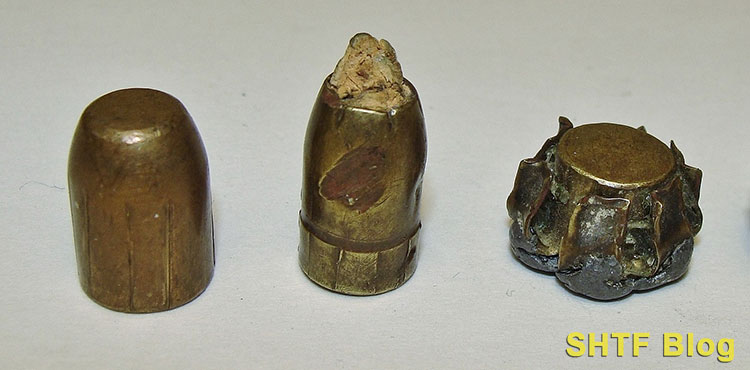
Foreign material can plug the cavity of a JHP, turning it into an FMJ. It's probably no accident that more JHPs are appearing with pre-plugged compressible inserts. One example is the FBI's latest +P 9mm 135-grain Hornady, another Flex-Lock design. Such improvements have shaded out the .40 S&W, and a good expanding 9mm bullet can even eclipse a .45 ACP FMJ. The 9mm is back in a big way thanks to better bullets.

Production of reliable JHPs poses greater challenges than FMJs due to myriad factors. These include not only the effects of barrel length on velocity, but also the twist rate of rifling. Service-sized pistols are more likely to achieve ballistic results, and most 9mms now incorporate the same 1:10 twist common to test barrels.
Until recently, inadequate expansion was a problem for owners of smaller pistols. Fortunately, the proliferation of compact designs has spawned loads tailored for short barrels.
We shouldn't forget the rifle crowd either. Some JHPs that appear suitable for hunting are actually "match" bullets designed to punch small groups in paper targets (the front section is hollow to shift center-of-gravity rearward). Others that appear to be JHPs are monolithic designs made entirely from copper alloys. The Barnes TSX is one example.
The small hole in its tip is there to initiate expansion, but core separation is impossible simply because none exists. The resulting mushroom is accompanied by deep penetration; a great choice for use on larger game animals – as is the similar Hornady GMX.
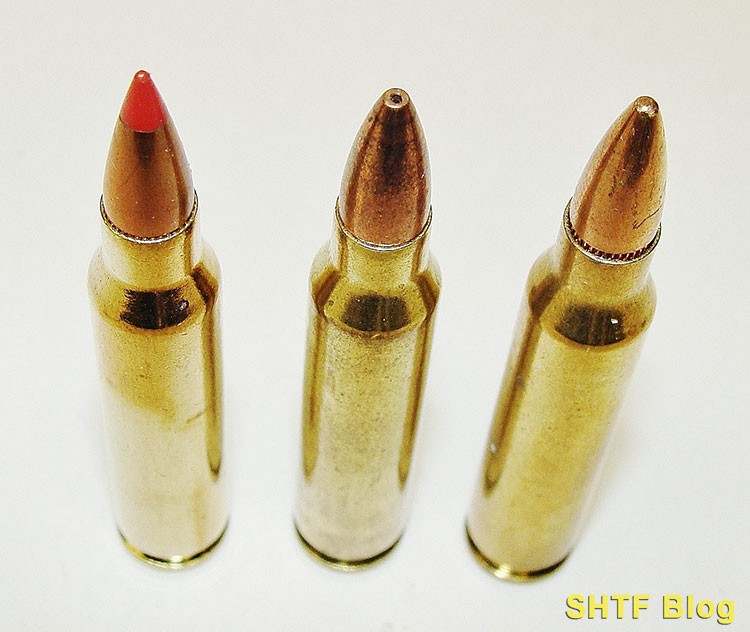
What's FMJ Good For?
When I ordered ammunition for my agency, it was purchased by the pallet load, mostly as FMJs, in 9mm, .40 S&W, .223 Remington, .308 Winchester, etc. Like most civilians, the vast majority of our shooting involved range work. The targets didn't seem to care if they were hit by JHPs or FMJs. Impacts and recoil were consistent due to similar ballistics. This strategy saved us a fortune and could do the same for you if you're buying ammo in bulk to save money.
Defensive ammunition costs an arm and a leg (assuming you can find any), but there are viable options among the popular calibers. Before establishing a defensive load, check for the availability of an equivalent and much less costly FMJ. If your defensive load has nickel-plated cases, they'll be easier to tell apart, not only on the range but also through chamber ports or press checks. Winchester's "Train and Defend" series of handgun cartridges follow this approach via matching FMJ and JHP loads.
Another benefit: FMJs can help reduce the toxic effects of lead, a major concern for indoor ranges. For maximum reduction, consider Total Metal Jacket (TMJ) types. Conventional JHPs and FMJs are created by swaging lead cores into copper cups, which leaves one end exposed.
The core of a TMJ is encapsulated because the "jacket" is created through a plating process. Some TMJs go a step further by using a sintered-copper-composite core that will disintegrate against hard surfaces. When combined with lead-free primers, any of these non-toxic loads also make gun cleaning a whole lot easier.
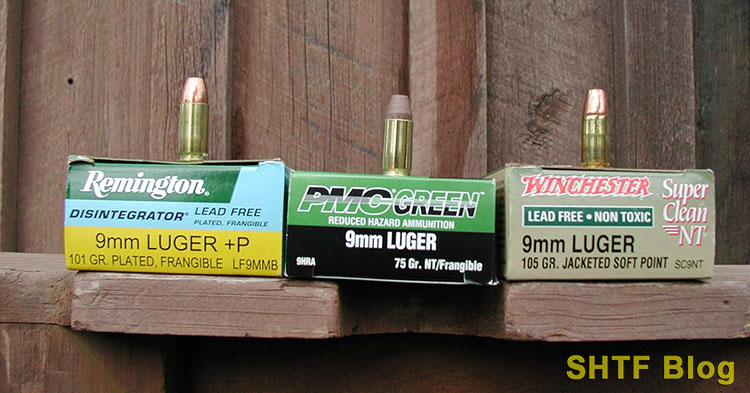
As for hunting, FMJs do have some value. I've used them for years in various centerfire handgun calibers to pot assorted small game species, usually with minimal meat damage. In a pinch, the same trick can press a .223 rifle into camp meat service by a switch to an FMJ. Some hide hunters use these loads for coyotes, etc., usually in open terrain where tracking and recovery pose fewer challenges.
Perhaps, the ultimate FMJ use involves the largest game of all; African elephant. The target is the brain and maximum penetration is paramount so, for decades, the projectile of choice has been a large-caliber blunt "solid"; some type of heavy-duty FMJ. Those who travel bear country with large revolvers adopt a similar strategy. The .44-caliber (or larger) bullet is often a heavy hard-cast lead semi-wadcutter designed for penetration.
Which Should You Use?
Given everything we've gone over – which should you use? FMJ or JHP? It depends on the application, but this table might help as a general guide:
JHP vs FMJ Final Thought
Despite the latest innovations, there really is no magic bullet for all situations. The manufacturers do their best, but desired outcomes are still heavily dependent on consumer education.
Jim's deer probably wouldn't have made it to the swamp if hit with a .458 Solid, but a simple switch to the right .308 bullet was all he really needed. For those into comparisons of foot-pounds, it's worth noting a .308 Winchester 150-grain SP would generate the same amount of energy as his .308 FMJ.
Shot placement matters, but so does bullet design. It's gotta be the right match for its intended purpose.
Steve Markwith is the author of the Survival Guns series of books, which includes the following titles:

Source: https://www.shtfblog.com/jhp-vs-fmj-bullets/
0 Response to "Why Does the United States Military Continue to Use Fmj Bullets"
Post a Comment